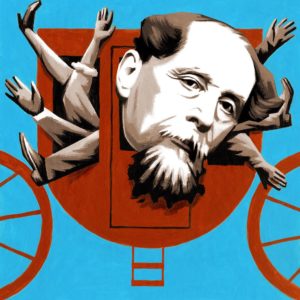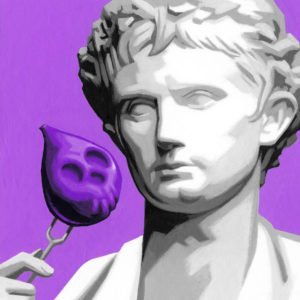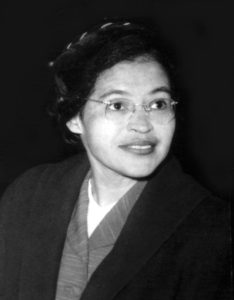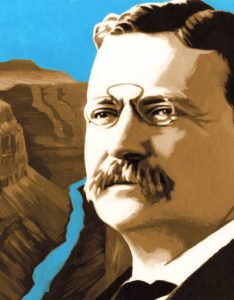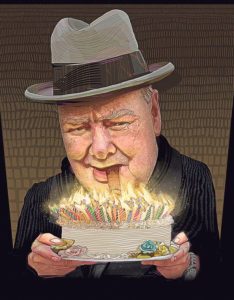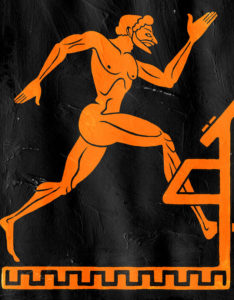Writer and historian Amanda Foreman took her family on an epic motorhome adventure. Would it drive them all round the bend?

Imagining yourself behind the wheel of an RV and actually driving one are two completely different things. I discovered this shortly after we hit the road in our 30ft rental for a 1,500-mile odyssey from Denver, Colorado, to Las Vegas, Nevada. As soon as I pressed down on the accelerator, other faculties such as breathing and thinking stopped functioning. My husband, Jonathan, took over, and remained in the driving seat for the rest of the trip, while I quietly buried my pride beneath a pile of flip-flops and rain jackets.
Did I mention there were seven of us — including five children? Masochistic, perhaps, but my motivation in initiating this most ambitious of family holidays was sound. Last year, I wrote in The Sunday Times about the poisonous effect social media can have on families, and on girls’ self-esteem in particular. With four daughters — Helena, 16, Halcyon, 13, and 11-year-old twins Xanthe and Hero (15-year-old Theo completes the gang) — this is particularly pertinent to us.

The latest research offers hope, though. The best antidote to the rapacious demands of the internet, experts say, is its reverse — the power of lived experience. And so we decided to put that theory to the test by taking to the road.
Everything was new and exciting at first. Look, a herd of cattle blocking the road! Oh, we blew the electrics! It was when we left the cool mountain ranges of Colorado and descended into Utah, a dip that sent the thermometer climbing into the 30s, that reality took over.
We were heading for Moab and its two national and one state parks. Some of the best scenery in the totemic road-trip movie Thelma and Louise is here. I kept repeating this fact until Helena reminded me that they’d never seen the film and couldn’t care less. The atmosphere of the RV, already thick with sweat and hormones, was beginning to grow heavy. Knees and elbows were making contact where they shouldn’t.
Our first hike was through the Arches National Park, so named after the formations that stake the desert like a thousand oversized Durdle Doors. Our trail took us to Devils Garden, with its giant phallic pillars. Another led to Landscape Arch, the longest natural arch in the world. A peculiar tension emanates from it, as though at any second something will snap and the whole thing will collapse. I recognised the feeling.

Three children claimed to be on the edge of survival by day’s end (heat, thirst, sand in shoe, etc). A night’s camping at Devils Garden did it for the rest.
The evening had started well. We ate under the starriest sky I’d ever seen. The intense blackness around us served to highlight the strange symphony of sounds wafting from the brush. After dinner, we sat in companionable silence, listening to the music of the desert. If we could have stayed that way until morning, the night would have been perfect. But shutting down an RV for the night requires concentration — not the futzing and farting about of a family of camping novices. By the time we had secured the awning, washed and put everything away, cleared the only escape route of detritus, converted the “dinette” into a quasi-bed large enough for a small person, or in our case reluctant twins, turned the banquette into a sofa bed (tricky with the seatbelt fittings running down the middle) and stashed the teenagers into the bunk above the driver’s seat, mercury had started rising in the worst way.
I lay on my side in the back alcove, feeling the grit between my toes and the sweat between my eyes, waiting for the inevitable blow-up. There was a yell, a thwack, and the RV started shaking on its plastic levellers. My husband and I leapt out of bed and turned on the lights. The children froze, the twins in mid-wrestle. Each returned sulkily to his or her place.

Once peace was restored, Jonathan and I listened for signs of a round two: was that it, or merely the first skirmish in a battle to the death? “It depends,” I said, “on whether we kill them first.”
“Where do we go from here?” Evita sang over the sound system as we headed to our next stop the following day. There were three more destinations to see before we arrived at the Grand Canyon. “This isn’t where we intended to be,” she warbled.
“Don’t listen to her,” my husband told the children, “she’s being a wuss.”
I was beginning to fear the wuss factor would end up trumping the wow factor. Your basic renters’ RV is essentially a tin can on wheels with a lavatory attached. By midweek we had wrecked the place. Only the desperate and foolhardy dared face the loo. Every spare inch of the RV was occupied by wet and drying clothes, creating a steam-room effect without the refreshing scent of eucalyptus.

A gentle rain accompanied our arrival at Bryce Canyon. Despite the name, it’s not a canyon at all, but a series of natural stone amphitheatres created by millions of years of frost-thaw cycles. Each one is filled with densely packed pillars and spires called “hoodoos”, which turn crimson and ginger in the sun. Our goal, as we set off from Ruby’s Campground, was to see the sun set over Bryce’s most famous amphitheatre, the hauntingly named Silent City. There was a whiff of mutiny in the damp air. Nothing obvious, but if I had suggested going back to the RV, no one would have complained.
We trudged through the pines towards Inspiration Point (by God, did we need some) in a long, straggly line. Glimpses of Silent City flashed through breaks in the trees. The hoodoos seemed not alive exactly, but immobile. I looked back and saw that the stragglers had stopped. They, too, were staring at the rocks.
At the Point, we waited in vain for a break in the clouds. Our son suddenly shouted: “It’s a peregrine falcon, I’m sure of it.” His sisters clustered around, taking photographs as the bird swooped and then banked hard into the air. “They do this to impress their mates,” Theo informed us.
Back at camp, we broke out the chocolate Oreos in celebration of Theo’s surprise expertise in all things avian. The rain also cleared in time for us to light the barbecue and go full-on carnivore. There wasn’t a peep from anyone that night.

The next morning, we reached Zion National Park right on schedule, a first for us. This day was a hike through the Virgin River to the Narrows, where the orange-brown walls of the canyon rise 1,000ft, but the gorge is only 30ft across. The water was cold, the rocks slippery, providing ample opportunities for a whinge. None came. I noticed a subtle change as we waded upriver: the children were the ones out in front. That wasn’t all. Over the next few days, blisters that would have been incapacitating at the beginning of the trip were now displayed with pride.
The news that we were camping on the rustic side of the Grand Canyon, at the North Rim, didn’t faze anyone at all. The South Rim, which overlooks the Colorado River, gets 10 times more visitors and has two dozen main viewing points. The North is higher, colder, smaller, with just three principal viewpoints, and is so quiet that you can hear the trees rustling in the early-morning breeze. It means you have one of the great natural wonders of the world all to yourself. We could picnic among the most spectacular scenery without another person in sight.
If there was a wuss among the group, it was me. We had trekked to Cape Royal, where a wooded trail leads to a dramatic plateau that offers one of the widest panoramas of the canyon. The children were naturally drawn to the ledge, carelessly dangling their legs over the side. I was torn between wanting to capture the moment for ever and shouting at them to get back. Jonathan intervened. “It’s all right,” he said. “They are free.”
There wasn’t an ounce of regret when we dropped off the camper in Las Vegas. I doubt we will ever rent an RV again. Yet we ended the week feeling truly content. Without being sappy about it, to experience nature in its untrammelled state is to feel insignificant and uplifted in equal measure.
We came, we saw, and were conquered, happily.
Amanda’s guide to a stress-free US motorhome holiday
Do book your campground berths at least six months in advance. I’m not exaggerating.
Do find out what your RV comes with. Usually, it’s practically nothing.
Do check the depot for “left behinds”. We picked up a barbecue that way, and donated it back at the end.
Do bring physical maps with you — there isn’t much coverage out in the sticks. Praise be.
Do have a games bag with amusements that don’t need charging, such as playing cards, colouring books and chess.
Do take the desert heat seriously. Load up on hats, sunscreen, insulated water bottles and handheld fans.
Do make a list of chores. There should be no passengers on your trip, only crew members.
Don’t overpack.
Don’t attempt more than four hours’ driving a day. It’s not much fun for the people stuck in the back.
Don’t assume that you’ll be allowed to use your generator past 8pm. Plan your meals ahead of time.
Don’t leave out any food overnight. Nature is not your friend. Nature wants to swarm over your leftovers and/or eat you.
Don’t forget to check your water levels every day. Remember how disgusting it is when you flush the loo on a plane and nothing happens when the trap opens? Now multiply that by five.
Don’t expect kids to be as rhapsodic about the scenery as you are.
Hiring a six-berth RV sleeping six for 10 days in November, picking up in Denver and dropping off in Las Vegas, starts at £830, including one-way fee, with Road Bear (roadbearrv.com). A 10-day fly-drive package from Denver in October costs £1,225pp for a family of six, including RV hire (bon-voyage.co.uk). A World on Fire by Amanda Foreman is published by Penguin
Family ties
Have you successfully bonded as a family on holiday? Or had a disaster? Tell us and you could win a £250 holiday voucher; see Letters for details. Email travel@sunday-times.co.uk
https://www.thetimes.co.uk/article/how-to-survive-an-rv-motohome-road-trip-through-utah-colorado-denver-las-vegas-nevada-america-with-the-family-q2j9hvnlg






